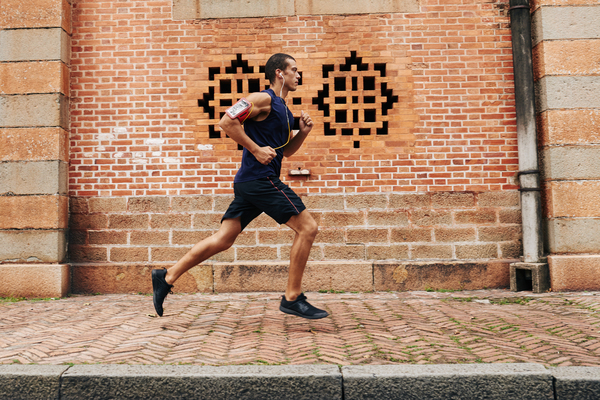Running velocity depends on both the physical fitness of a person and his natural data. The first thing that affects velocity is gender and age.
- 9-11 km / h – the average running velocity of a child under 18 years old
- 9-12 km / h – the average velocity of a woman
- 12-15 km / h – the average velocity of a man
Before puberty, the running velocity of boys and girls is approximately the same. The gap in numbers begins from the moment of puberty and is due to the different hormonal background of men and women.
Therefore, by adulthood, which, from the point of view of sports standards, begins at the age of 18, a number of physiological features are observed that explain why women are slower than men:
- Women have weaker joints, which means weaker ligaments and tendons.
- The mass fraction of fat in the body of a man is 10-15% lower than that of a woman.
- Almost 30% in women, the limiting strength of the muscles of the limbs is lower than in men.
- The volume of a woman’s heart is 10-20% less than a man’s.
- Women take longer to recover and are more prone to stress reactions.
- Women have lower hemoglobin, which means that the body transports oxygen worse.
- In men, the level of testosterone is 10 times higher than in women, that is, the musculoskeletal system works better.
- The cadence (step) of a woman is shorter than that of a man.
- Although it is worth noting that women are easier to cope with temperature changes, they have better coordination and vestibular apparatus.

Maximum human running speed
The next factor that affects speed is distance. Most trained people can run at a speed of 15-20 km / h, but not more than one kilometer. Further, their velocity will begin to fall to 12-15 km / h. If we talk about elite athletes, then at marathon distances, the velocity of men is 19-21 km / h. Women’s performance in running is 12-15% lower.
Given the distance, runners are divided into sprinters (100-400 m), intermediates (800-3000 m), stayers (5000-10000 m) and marathon runners, and their training systems are radically different.
The highest velocity indicators are typical for sprint distances: the best athletes overcome the 100-meter race in 10-11 seconds, and 200 meters in 19-20 seconds. Athletes show such time mainly in competitions, because even in training their speed is 10-20% lower than the maximum.
For stayers and marathon runners, endurance is in the foreground, the ability to maintain a stable velocity for a long time and accelerate to the finish line. For beginners on long distances, the velocity is 9-12 km / h, for trained people – 16-18 km / h.
Eliud Kipchoge ran the fastest 42 km 195 m in October 2019 – in 1 hour 59 minutes and 40.2 seconds. To do this, he had to run the entire distance, maintaining a speed of 21.1 km / h. But this record was not counted, because the conditions of the race were almost “laboratory” and violated the marathon rules. He also set the current world record in 2018 at the Berlin Marathon, running it in 2 hours 1 minute and 39 seconds.
Repeatedly tried to compare sprinters and stayers, and for this, scientists calculated the distance at which their physical form can be compared – this is 492 meters.
Human record speed
The fastest man in the world is Usain Bolt. He set his first 100-meter world velocity record in the spring of 2008, running the distance in 9.69 seconds. A few months later, Bolt broke his own record by 0.03 seconds.
The following year, at the World Championships in Berlin, he again overtook himself, running 100 meters in 9.58 seconds. At the peak moment, its velocity was 44.72 km / h. To date, no runner has officially exceeded that speed.
